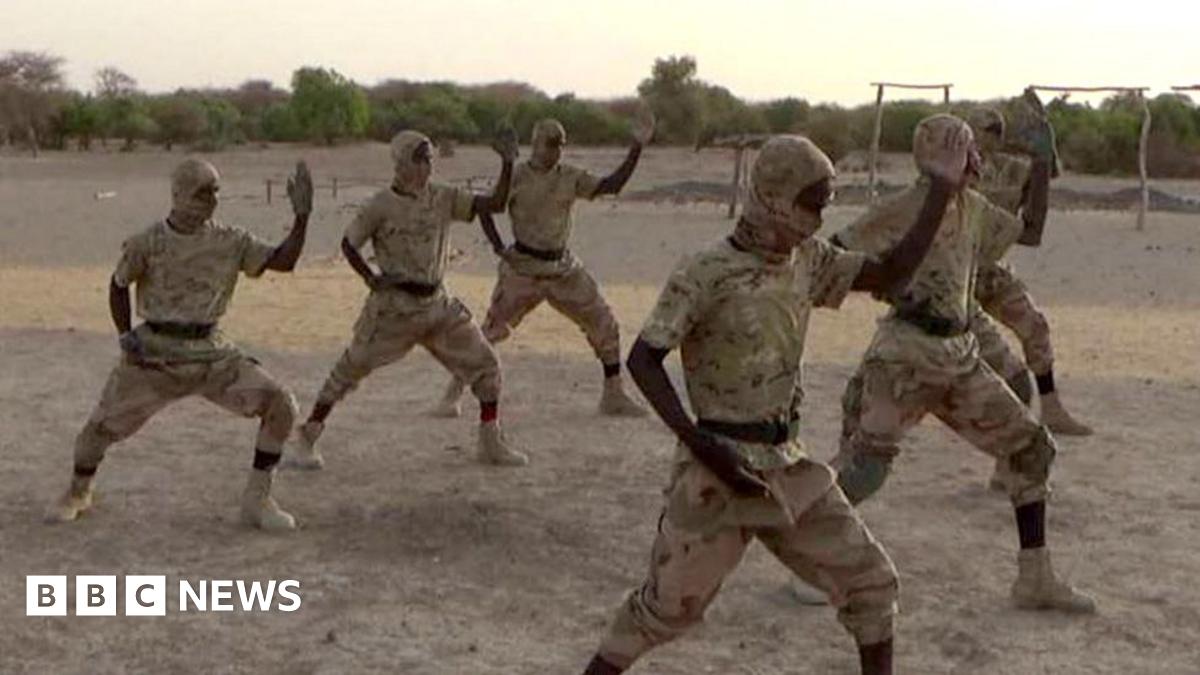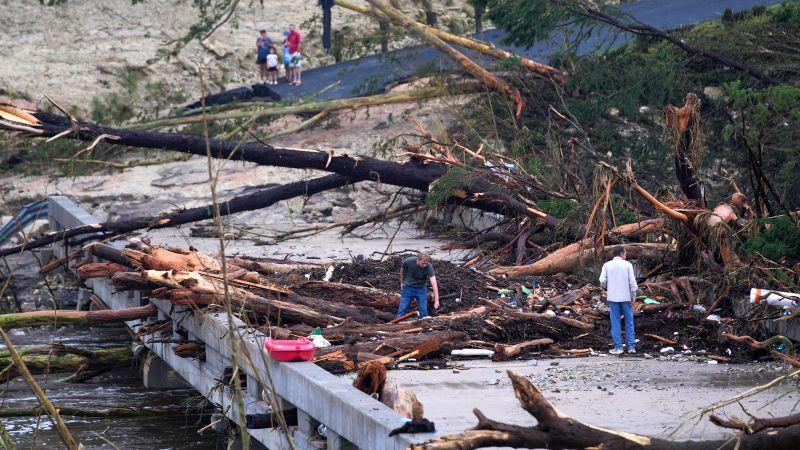From Al-Qaeda To Africa's Deadliest: The JNIM Story

Welcome to your ultimate source for breaking news, trending updates, and in-depth stories from around the world. Whether it's politics, technology, entertainment, sports, or lifestyle, we bring you real-time updates that keep you informed and ahead of the curve.
Our team works tirelessly to ensure you never miss a moment. From the latest developments in global events to the most talked-about topics on social media, our news platform is designed to deliver accurate and timely information, all in one place.
Stay in the know and join thousands of readers who trust us for reliable, up-to-date content. Explore our expertly curated articles and dive deeper into the stories that matter to you. Visit Best Website now and be part of the conversation. Don't miss out on the headlines that shape our world!
Table of Contents
From Al-Qaeda to Africa's Deadliest: The JNIM Story
The rise of Jama'at Nusrat al-Islam wal-Muslimin (JNIM) represents a chilling evolution of jihadist terrorism in the Sahel region of Africa. Once a collection of disparate groups, JNIM has consolidated power, becoming the most dangerous terrorist organization in the region and a significant threat to global security. Understanding its history, ideology, and tactics is crucial to comprehending the ongoing conflict and the humanitarian crisis unfolding across Mali, Burkina Faso, and Niger.
The Genesis of a Terrorist Powerhouse
JNIM's story begins not with a single event, but with a confluence of factors. The power vacuum created by political instability in Mali following a 2012 coup provided fertile ground for extremist groups to take root. Several existing al-Qaeda-linked organizations, including Ansar Dine, the Movement for Oneness and Jihad in West Africa (MUJWA), and al-Qaeda in the Islamic Maghreb (AQIM), were already operating in the region. However, these groups lacked the cohesive structure and centralized command necessary to fully exploit the situation.
In 2017, these factions merged, forming JNIM under the leadership of Iyad Ag Ghaly. This merger proved to be a masterstroke, dramatically increasing JNIM's capabilities and reach. Ag Ghaly, a veteran Tuareg leader with considerable influence, brought not only military prowess but also a sophisticated understanding of local dynamics, enabling JNIM to effectively exploit ethnic tensions and grievances.
JNIM's Tactics and Ideology: A Brutal Strategy
JNIM’s ideology is a blend of Salafist jihadism, incorporating elements of both al-Qaeda's global vision and a focus on local grievances. This allows them to garner support from a diverse range of populations, including those disillusioned with weak governance, economic hardship, and perceived injustices. Their tactics are equally brutal, ranging from targeted assassinations and kidnappings to large-scale attacks on military and civilian targets. The group frequently uses improvised explosive devices (IEDs), highlighting their increasing sophistication in military tactics. They are also skilled at utilizing propaganda and social media to disseminate their message and recruit new members.
The Humanitarian Catastrophe: A Consequence of JNIM's Reign
The violence perpetrated by JNIM has had a devastating impact on the civilian population. Thousands have been killed, countless others displaced, and entire communities shattered. The humanitarian crisis in the Sahel region is dire, with widespread food insecurity, lack of access to healthcare, and a surge in internally displaced persons (IDPs). This situation is further exacerbated by the presence of other armed groups and the ongoing conflict between government forces and various armed factions. The instability fueled by JNIM has created a breeding ground for further violence and suffering.
Combating JNIM: A Multifaceted Challenge
Addressing the JNIM threat requires a multifaceted approach. Military intervention alone is insufficient; a comprehensive strategy must also address the underlying political, economic, and social factors that contribute to the group's appeal. This includes strengthening governance, promoting economic development, and fostering reconciliation between different communities. International cooperation is crucial, as JNIM’s reach extends beyond national borders. Efforts to counter JNIM’s propaganda and recruitments are equally important.
Conclusion:
JNIM's rise underscores the complex and ever-evolving nature of jihadist terrorism in Africa. The group's ability to consolidate power and inflict widespread suffering highlights the urgent need for a comprehensive and coordinated response. Addressing this challenge will require long-term commitment, substantial resources, and a nuanced understanding of the factors driving the conflict. Failure to act decisively will only allow JNIM's influence and destructive power to continue to grow, with devastating consequences for the Sahel region and potentially beyond. We must remain vigilant and committed to finding lasting solutions to this critical security and humanitarian crisis.

Thank you for visiting our website, your trusted source for the latest updates and in-depth coverage on From Al-Qaeda To Africa's Deadliest: The JNIM Story. We're committed to keeping you informed with timely and accurate information to meet your curiosity and needs.
If you have any questions, suggestions, or feedback, we'd love to hear from you. Your insights are valuable to us and help us improve to serve you better. Feel free to reach out through our contact page.
Don't forget to bookmark our website and check back regularly for the latest headlines and trending topics. See you next time, and thank you for being part of our growing community!
Featured Posts
-
 Northeast Fourth Of July Travel Stormy Weather Disrupts Holiday Plans
Jul 09, 2025
Northeast Fourth Of July Travel Stormy Weather Disrupts Holiday Plans
Jul 09, 2025 -
 Did You Miss This Batman Actors Unexpected Young Sheldon Appearance
Jul 09, 2025
Did You Miss This Batman Actors Unexpected Young Sheldon Appearance
Jul 09, 2025 -
 Teenage Sex Case Marcus Fakana Released From Dubai Jail
Jul 09, 2025
Teenage Sex Case Marcus Fakana Released From Dubai Jail
Jul 09, 2025 -
 Another Rba Rate Cut Inevitable Good News For Australian Mortgages
Jul 09, 2025
Another Rba Rate Cut Inevitable Good News For Australian Mortgages
Jul 09, 2025 -
 Deadly Texas Floods How To Help Victims And Communities Recover
Jul 09, 2025
Deadly Texas Floods How To Help Victims And Communities Recover
Jul 09, 2025
Latest Posts
-
 Aleksandar Kovacevic Vs Hady Habib Los Cabos Day 1 Match Prediction
Jul 16, 2025
Aleksandar Kovacevic Vs Hady Habib Los Cabos Day 1 Match Prediction
Jul 16, 2025 -
 The Paradox Of Orban Foreign Appeal And Domestic Weakness
Jul 16, 2025
The Paradox Of Orban Foreign Appeal And Domestic Weakness
Jul 16, 2025 -
 From Wimbledon Loss To Future Triumph Amanda Anisimovas Determined Return
Jul 16, 2025
From Wimbledon Loss To Future Triumph Amanda Anisimovas Determined Return
Jul 16, 2025 -
 Taro Daniel Vs Alex Hernandez 2025 Los Cabos Open Match Preview And Prediction
Jul 16, 2025
Taro Daniel Vs Alex Hernandez 2025 Los Cabos Open Match Preview And Prediction
Jul 16, 2025 -
 Jaden Flaggs Summer League Status With The Dallas Mavericks An Update
Jul 16, 2025
Jaden Flaggs Summer League Status With The Dallas Mavericks An Update
Jul 16, 2025
